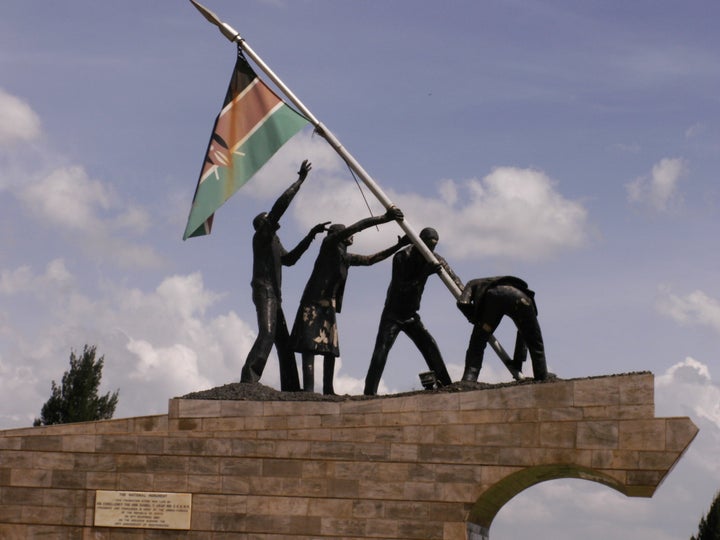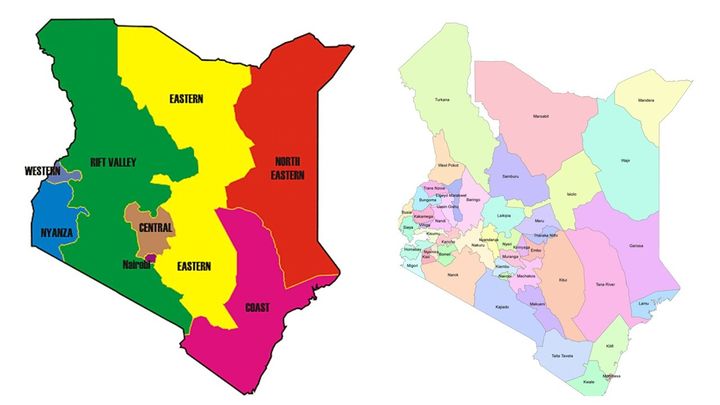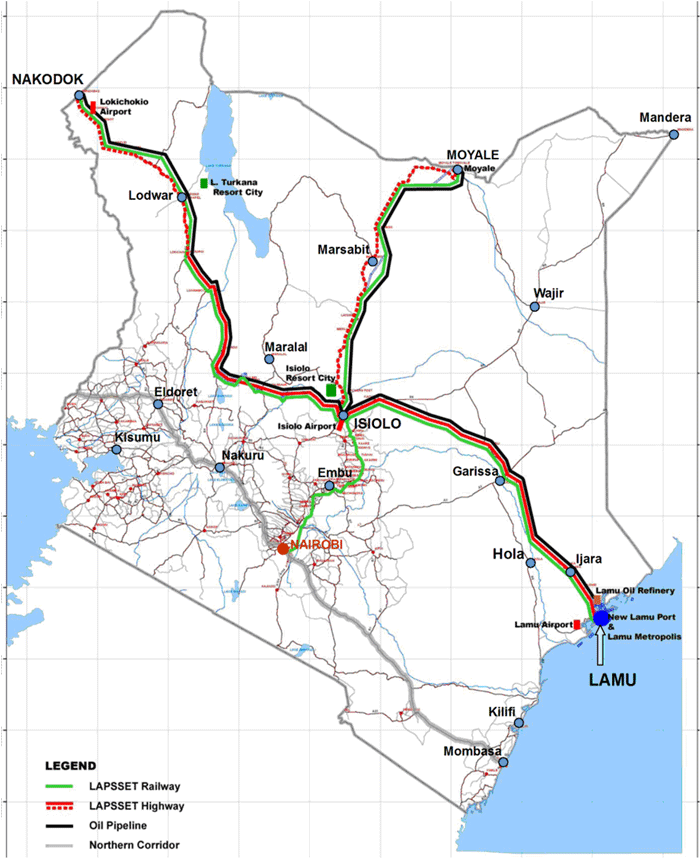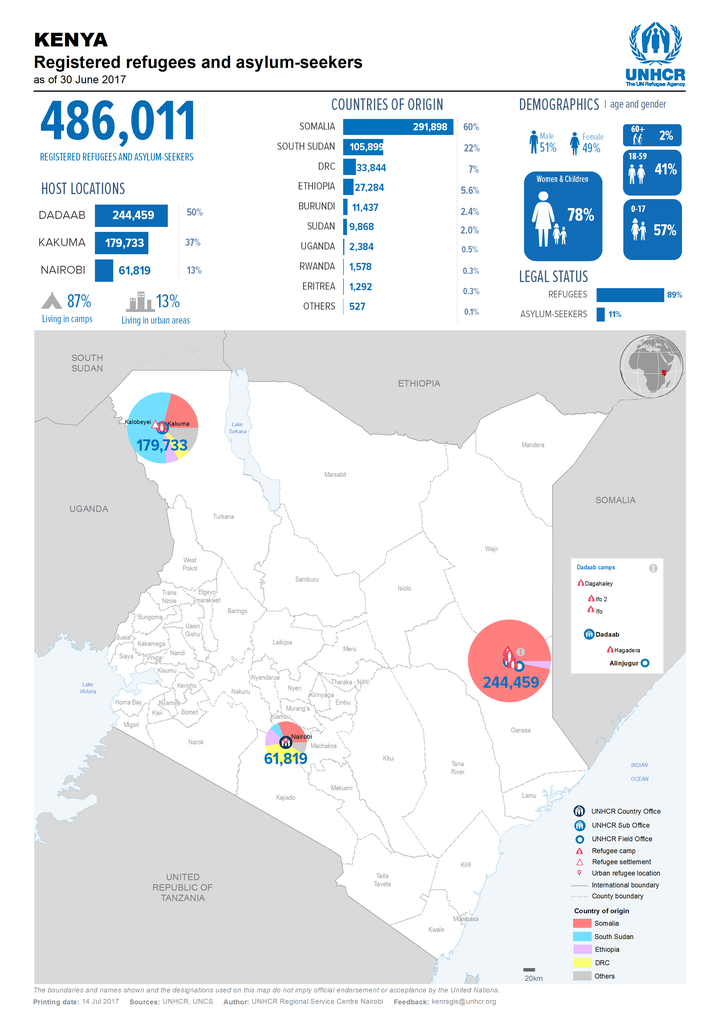
National Monument in Nairobi’s Uhuru Park commemorating independence from British Rule
Kenyans go to the polls August 8th with skeletons from the past and hope for the future competing for votes. 2017 marks the 60th anniversary of democratic elections in Kenya and the East African nation’s past struggles with autocracy and political violence are on the minds of voters. However, with the largest infrastructure project since independence recently completed, Kenyans are also cautiously hopeful about the nation’s economic future.
Kenya is East Africa’s largest economy. The port city of Mombasa and the capital Nairobi remain the economic gateway to East Africa, and a political hub for diplomacy and development efforts from Sudan to Somalia. Given its political and economic importance in a volatile but vital region, the world should be pay close attention and support Kenya’s democratic process.
As a diverse nation of over 48 million, the issues that motivate voters across a country the size of France are not singular. Media coverage has historically reduced Kenyan politics to ethnic arithmetic. But Kenyans are motivated by far more than the dismissive and pejorative coverage of politics as primordial “tribalism.” Below are six key themes which frame the way competing visions of Kenya’s past and future are influencing the polls. Whatever the outcome of the election, these issues will be central points of concern for the next Kenyan administration grapple with.

Kenya’s Regional importance
Political Dynasties and Incumbency
At the presidential level, incumbent Uhuru Kenyatta and his challenger Raila Odinga are well known figures across the country. As the sons of Kenya’s first president and vice president, they both represent political dynasties and historic rivalries over the direction of Kenya’s future. Kenyatta is 17 years younger than Odinga and is campaigning on his government’s ability to deliver on grand development plans and combat regional security concerns. Odinga is the elder statesmen of Kenya’s political opposition whose campaign focuses on critiques of government corruption and national efforts to devolve power from the historic central focus on the presidency.
Incumbency is a powerful historical tool in Kenya. Since independence in 1963, none of Kenya’s four past presidents have ever lost an election, and the weight and resources of incumbency looms large at the polls. Odinga has contested the presidency on three past occasions (1997, 2007 and 2013). The 2007 and 2013 polls were marred by claims of rigging and many of his supporters believe these electoral victories were “stolen” from the opposition. However, with Kenyatta and Odinga leading political coalitions with supporters spread out across the country, polls are predicting the incumbent leading slightly in a virtual statistical dead heat.
The constitution requires that presidential winners receive more that 50% of the vote, and at least 25% in 24 of the nation’s 47 counties. If no candidate reaches the required threshold, a run-off election is required by law to take place within 30 days. As the candidates wrap up a contested campaign season though, their supporters are preparing to vote with the memories of past electoral related violence dominating much of the discussion.
Violence and Electoral History
Kenya’s history of democratic elections goes back to 1957 but is tainted by autocratic repression and political violence. From 1963-2002 Kenya was ruled by just two presidents (Jomo Kenyatta and Daniel Arap Moi) and a single political party (KANU). From 1969-1991, Kenya was a one party state until domestic protests and international pressure forced then President Moi to end the one-party state. 2017 is the sixth set of national elections since the return to multi-party rule. Three of these elections (1992, 1997 and 2007) are associated with high levels of electoral violence. Much of this violence was state-sponsored and exploited historical divisions over unresolved land disputes and regional economic inequality dating back to the colonial period.
The 2007-2008 post-election violence looms large at the polls today as a vivid memory of how campaigns can turn violent. Less than ten years ago, the nation teetered on the verge of civil war for several weeks and Kenyan calls for peace in 2017 a linked directly to this period. Over 1,200 were killed and 600,000 internally displaced after a presidential election was tarnished by well backed claims of rigging. With Odinga and Kenyatta on opposite sides of violence in 2008, public rhetoric has preached peace with the knowledge than the top perpetrators of political violence have yet to be brought to justice.
Much has changed since 2008 though and the violence sparked a national conversation over the power of presidential politics. The result of this debate was a new constitution adopted by a national referendum in 2010, aimed at decentralizing power and transferring control over much of Kenya’s economic development resources to 47 newly created counties. 2017 is the 2nd election since the new constitution, and “devolution” as Kenyans call it, is helping to defuse tensions from the “winner take all” stakes at the presidential level to local and county level races.
Local vs National Politics

Kenya’s old provincial map 1963-2013 (left) vs the new counties map 2013—present. The 8 former provinces were a legacy of British colonial rule and the new constitution in 2010 dramatically decentralized political control by creating 47 new counties.
Since independence from British colonial rule in 1963, much of Kenya’s political system focused on the power of the president to control and distribute the nation’s resources to his political supporters. Through a complex system of political patronage, most Kenyan voters have been socialized to believe that if they get their person into power it will be “our turn to eat.” However since the adoption of the 2010 constitution, Kenyans now place their vote for not just a president and member of parliament, but six elected officials from the local level up.
In 2013, new county level assemblies, governors, senators and special women’s representatives were created to decentralize power. Voting for these positions for the first time in 2013, many Kenyan were unclear just what these new positions were tasked to do, and thus had little basis to judge potential candidates. However in the last four years, with “devolution” a central platform of political debate, large amounts of power and resources have shifted to the county level raising the stakes particularly for races for governors and county assemblies across the country. Voters are responding to this system in productive ways and the primary season saw a number of incumbent political luminaries sent home in their bid to win re-election while others shifted their focus from national to county level positions. For analysts of Kenya’s political system, devolution has helped diffuse some of the tension at the national level but also created potential flash points for violence and corruption at the county level.
Development vs Inequality
In June 2017, Kenyatta’s Jubilee coalition celebrated the completion of the nation’s largest infrastructure project since independence. The new standard gauge railway, completed with Chinese loans and labor, drastically reduces the travel time from Nairobi to the main port in Mombasa. It is part of a large scale development plan instituted by the previous Kibaki administration called Vision 2030. Much of the focus of this plan centers on dramatic upgrades to the rail and road system, building a pipeline for newly discovered oil deposits in northern Kenya and linking these grand infrastructure projects to a new port to ensure Kenya remains the economic gateway to East Africa.

Grand Infrastructure Plans as Part of Vision 2030
While the Kenyatta administration has continued to invest heavily in these grand development plans, projects like the standard gauge railway have been dogged by claims of corruption and budget overruns of four times initial estimates. Government investment in infrastructure has fueled economic growth to nearly 6% annually national level but also inflation rates of 10% at the local level. So while average citizens have celebrated the expansion of the road and rail network, they have also seen the price of basic commodities increase drastically, hitting the poorest Kenyans the hardest. Rising food prices have also been compounded by pervasive drought in many regions leaving many to think more about where to find their next meal than the nation’s political future.
Competing visions of national level economic growth vs local hardship has increased the political focus on growing inequality in Kenya with the opposition updating a call from a 1970s political martyr J.M. Kariuki claiming Kenya is “now a nation of 40 billionaires and 40 million beggars.”
Regionalism and Security
Concerns over security in Kenya are not confined to electoral campaigns. As a longstanding hub for refugees fleeing violence and periodic famine in Somalia, Sudan, Ethiopia and Uganda, Kenya is home to a large refugee population. In recent years though an increasing threat has come from Somalia and the insurgent rebel group Al Shabab. To combat this growing cross-border threat, the Kenyan military invaded southern Somalia in 2011 and has since contributed thousands of troops to the regional AMISOM mission to fight Al Shabab within Somalia.

Despite Kenyan military efforts to push Al Shabab from the Somali borderlands, attacks in Kenya have increased dramatically since 2011, with horrific incidents such as the Westgate Mall in 2013 and Garissa University College in 2015 gaining global attention. While these large scale attacks have decreased since 2015, insecurity is still rampant in the Somali borderlands with dozens of small scale attacks in recent years in Mandera, Wajir, Garissa and Lamu counties.
Insecurity in historically marginalized northeastern Kenya has not captured the same global attention as the 2013 attack on an upscale Nairobi mall. However, while Kenyan security forces have largely contained Al Shabab to these volatile border regions, ethnic profiling of Kenyans of Somali dissent and widespread use of extra-judicial violence to combat “terrorism” has drawn increasingly poignant critiques from local and global civil society organizations.
As an electoral issue, Kenyans seem divided on how to combat regional security threats. Kenyatta is committed to a long term military presence in Somalia and has taken controversial steps to close the largest refugee camp in the country housing 100,000s fleeing violence in Somalia. Odinga on the other hand has vowed to withdraw troops from Somalia and concentrate on security issues at home. Neither side though seems fully committed to ending the widespread persecution of refugees, Kenyans of Somali descent, and Muslims across the country.
Peace vs Justice
In 2013, calls for peace were embraced by Kenyans across the country and the election season did not see a return of the violence of 2007/2008. Peace narratives have also dominated this election cycle, but little has been done to bring about justice for past crimes of political violence. Those most vocal about the need for change in Kenya have rallied around the increasingly loud cry that “peace without justice” is just a way for the status quo of to continue.
Kenya has a long history of political impunity and a tendency to privilege amnesia over reconciliation. After 2008, the state pledged a different approach and formed the most ambitious of these committees with the Truth Justice and Reconciliation Commission (TJRC).Charged with the investigation of human rights abuses and other crimes of historical injustice committed from 1963 to 2008, many saw this as a bold step towards ending the culture of impunity.
In 2013, when then ICC indicted politicians Uhuru Kenyatta and William Ruto won the popular vote, there was little political will to deal with the political crimes of the past. Since 2013, the ICC cases against Uhuru and Ruto on their role in the 2008 post-election violence have been dropped, as evidence was nearly impossible to gather from a government some deemed the “alliance of the accused.”
Delivering their final report after the ICC intervention in 2013, the TJRC’s wide ranging recommendations were quickly tabled in parliament, and as recently as July 2017, Deputy President Ruto claimed implementing the report would simply divide Kenyans and re-open old wounds.
Kenyans are hopeful that the August 8th elections will deliver a free, fair and peaceful result. However, a large portion of the Kenyan electoral will also be casting their ballot for justice and reconciliation as much as peace and economic security. Whoever will inherit the highest office on, will have to think both of Kenya’s bright future and reconciling with a sometimes dark past.
Matt Carotenuto is Associate Professor of History and Coordinator of African Studies at St. Lawrence University in Canton NY. At St. Lawrence he works closely with the University’s long-standing Kenya Semester Program. With Katherine Luongo he is the author of Obama and Kenya: Contested Histories and the Politics of Belonging in Kenya. His work on African affairs and study abroad has also been featured in Politico, Salon, Open Democracy, Africa is A Country and the Washington Post.
